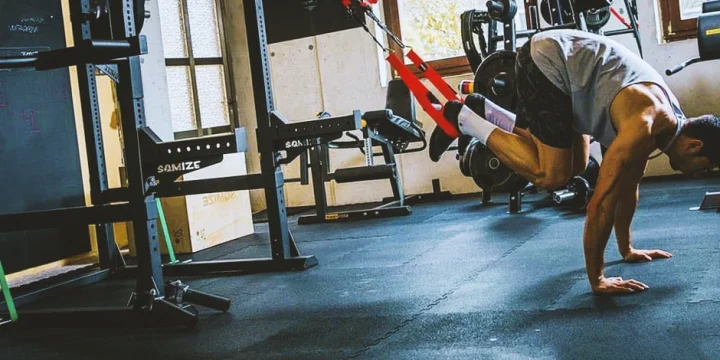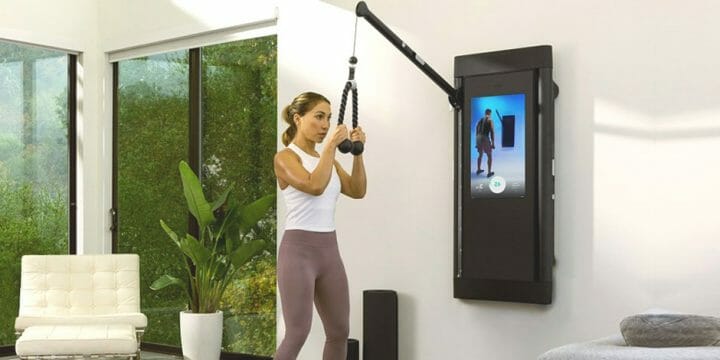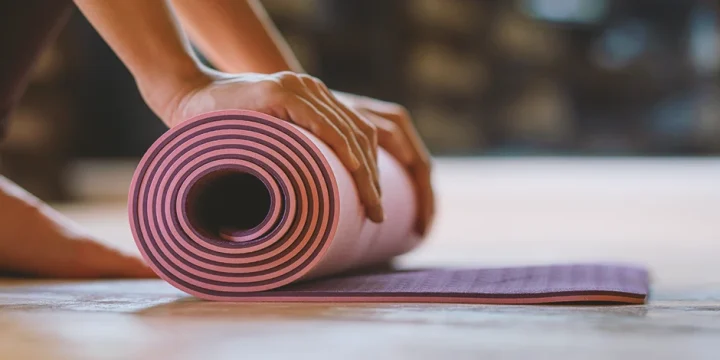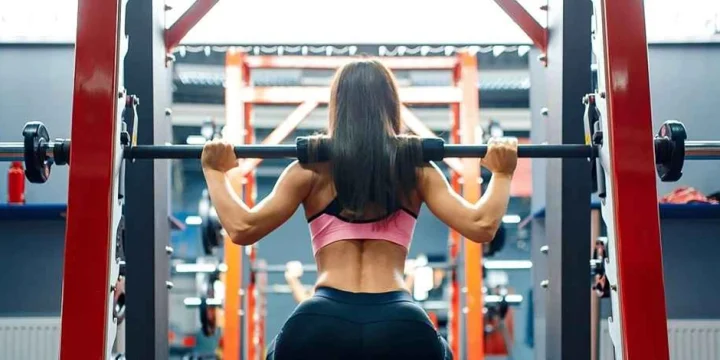Maintaining your home gym equipment is essential for a safe and effective workout.
And one of the most important parts of properly maintaining your exercise machines is lubricating them regularly.
Lubrication will help keep all moving parts running smoothly and reduce wear and tear, which can help avoid future costly repairs or replacements. In addition, it helps prevent noise from developing as you use your equipment, making it enjoyable to work out at home.
So how do you go about lubricating your home gym equipment? Read on to find out.
Quick Summary
- Proper lubrication of home gym equipment is crucial for ensuring a smooth and safe workout experience.
- Different gym equipment types require specific lubricants, like silicone-based for treadmills and graphite powder for weight machines, to maintain optimal functionality.
- Regular lubrication helps prevent wear and tear, reducing the risk of costly repairs and replacements.
- As a fitness enthusiast, I've found that consistent lubrication not only extends the life of the equipment but also enhances the overall workout experience.
Lubricating Home Gym Equipment

Lubricating gym equipment is necessary to maintain performance, prevent wear and tear, and ensure a smooth workout.
Lubrication does the following:
- Reduces friction
- Prevents machine wear
- Protects against corrosion
- Cools by dissipating heat from surfaces
- Seals
Various types of home gym equipment require different lubricants to ensure optimal functionality, and you should always consult the manual and follow the manufacturer’s guidelines.
Applying the wrong type of lubricant or using excessive amounts can damage the equipment and void manufacturer warranties
Let’s take a quick look at how to properly lubricate various gym equipment.
Treadmills
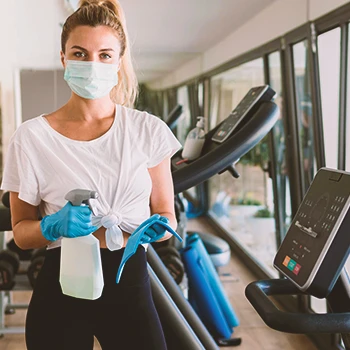
Treadmills are the most common type of home gym equipment due to the fact that most people associate treadmills with fat burning workouts.
Unfortunately, they are also known to need frequent lubrication to keep them running smoothly.
Most treadmills require silicone-based lubricant, which helps reduce friction and noise while protecting the motor from strain.
When applying silicone lubricant, you should use a cloth or roller to spread it on the treadmill’s belt in a thin layer until it covers the entire surface.
It is essential for your home gym equipment that you not apply too much lubricant, as it can cause damage to the machine’s electronic components.
If you are looking for a new piece of equipment to add to your home gym arsenal, check out our list of tested and approved crossfit home gym equipment.
Ellipticals
From what I've seen, budget elliptical machine perform best with powdered graphite or aerosol wax. Other oils or silicone-based products may damage them over time.
To apply graphite powder or wax-based product, sprinkle some onto both tracks before wiping off any excess with a clean cloth.
Weight Machines
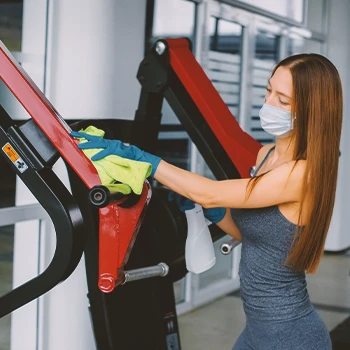
I've found that weight machines, aside from regular dusting, need only a bit of lubrication every few months to keep them in top shape.
However, weight machines also need occasional lubrication every few months, depending on workout frequency.
One common method is using petroleum jelly (Vaseline) to reduce friction between sliding parts, like on a good cable machine, while also protecting them from corrosion.
Corrosion can be caused by sweat buildup.
Make sure that you only apply petroleum jelly sparingly; too much can leave residue inside cables, ultimately making these parts stick over time.
Related Article: Can Vaseline Burn Fat?
“Doing 30 to 45 minutes of strength training two to three times a week is an excellent way of building lean muscle mass, burning calories, and boosting your metabolism.”
- Emily Cronkleton, Certified Yoga Teacher
Pilates Machines
A typical lubricant for pilates machines is an all-purpose type such as WD-40 or 3-in-1 oil to lube all moving parts.
To apply lubricant, you should remove any dust or dirt buildup on the machine by cleaning it with a damp cloth and letting it dry completely.
Once the machine is clean, spray a light mist of lubricant onto each part that moves, being careful not to oversaturate it with too much product.
Allow the machine to sit for a few minutes before wiping off any excess with a cloth; this will ensure adequate lubrication of all parts without leaving excess residue.
Rowers
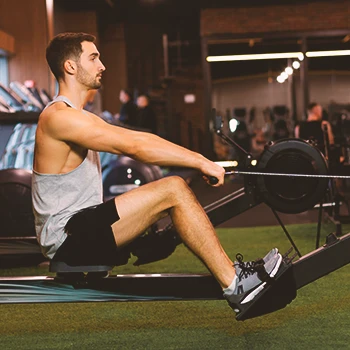
Based on my experience, rowers typically require silicone-based grease, not oils or sprays, for optimal maintenance.
This type of grease helps reduce friction between moving parts like pulleys and rollers while also preventing corrosion from sweat buildup over time.
To apply silicone-based grease correctly, you should remove dust and dirt from each component using a damp cloth and let it dry entirely.
Then take some silicone grease on your fingertip and spread it in circular motions along each track, covering the entire surface.
Allow the machine to sit for several minutes before wiping off any excess product with a clean cloth.
Related Article: Best Compact Rowing Machines
Types of Lubricants
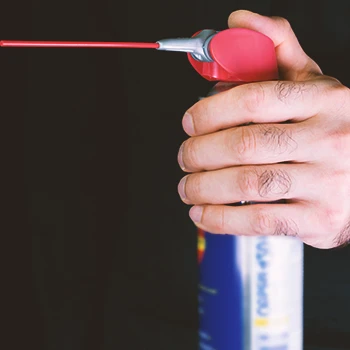
When it comes to lubricating your favorite home gym equipment, there are different types of lubricants that can be used depending on the type of machine and its needs.
Graphite powder is excellent for weight machines because it is an extremely fine lubricant with low viscosity.
This helps reduce friction between moving components while also preventing surface wear over time.
Silicone-based grease is a popular choice for home gym equipment, such as rowers.
This type of lubricant helps reduce friction between moving parts like pulleys and rollers while also providing oxidative protection.
Yet, always make sure to read the manual, as some manufacturers may have specific recommendations or restrictions regarding the use of certain lubricants, like WD-40, on their equipment
FAQs
Can I Use Olive Oil to Lubricate My Home Gym Equipment?
No, you should avoid using olive oil to lubricate your home gym equipment; doing so may void any manufacturer’s warranty. Follow the guidelines given in the owner’s manual.
Can I use WD-40 to lubricate my treadmill?
You can use WD-40 to lubricate your treadmill, but make sure to use the WD-40 Specialist Silicone Lubricant. Consult your treadmill manual for specific instructions.
About The Author
You May Also Like
